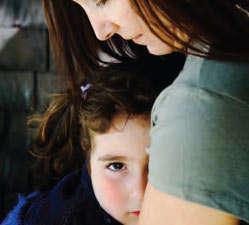In two nationally representative surveys, about 2 percent of mothers with at-home children under the age of 18 reported symptoms meeting the clinical criteria for abuse of or dependence on illicit drugs or prescription drugs that are being misused.

Dr. Leigh Ann Simmons, currently of Duke University, and former colleagues at the University of Kentucky found that 1.1 percent of the 19,300 mothers in this category who responded to the 2002 and 2003 National Survey on Drug Use and Health had a substance use disorder involving prescription painkillers, tranquilizers, sedatives, or stimulants; 0.9 percent involving marijuana; 0.4 percent, cocaine; 0.1 percent, heroin; and 0.2 percent, multiple drugs. The overall rates of drug abuse were not higher among these women compared with other women who participated in the survey. Compared with non-drug-using mothers, however, mothers who used drugs were, on average, younger, less educated, more stressed, less healthy, and more likely to be unmarried or divorced, unemployed, receiving public assistance, victims of interpersonal violence, and affected by serious mental illness.
Parental substance abuse increases a child's risk for neglect, abuse, and health and behavioral problems, including poor socialization, attention deficit hyperactivity disorder, depression, and substance use disorders. Dr. Simmons and colleagues urge increased attention to detecting and responding to parental drug abuse in primary care, pediatric, and emergency settings and support for research to better understand the impact of parental drug abuse and related factors on children's development.
Annals of Epidemiology 19(3):187–193, 2009. [Full Text (PDF, 315KB)]
